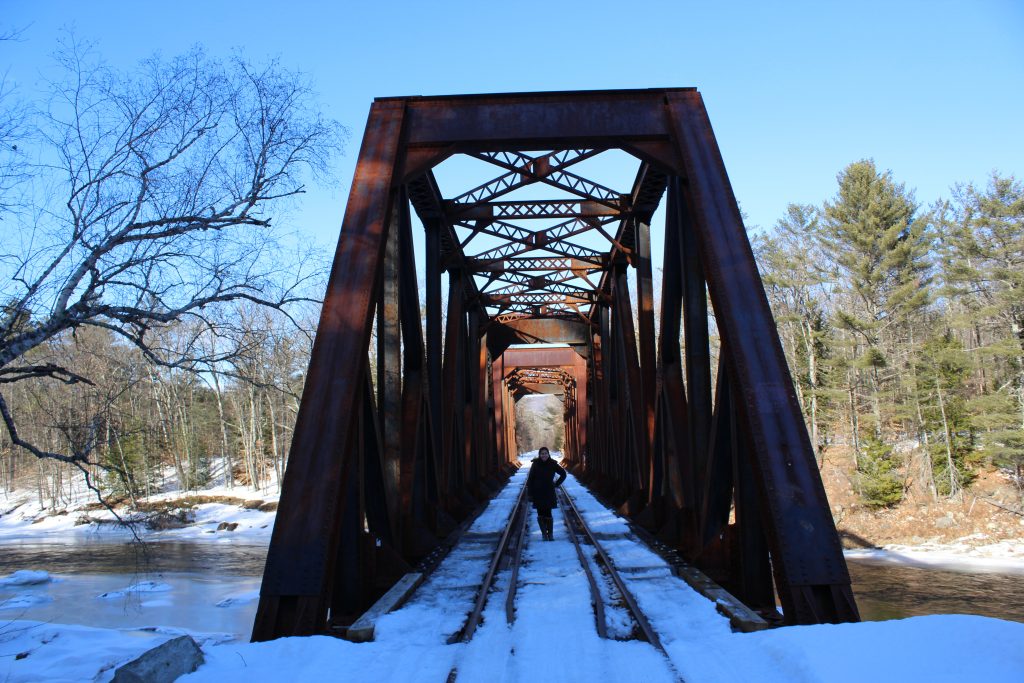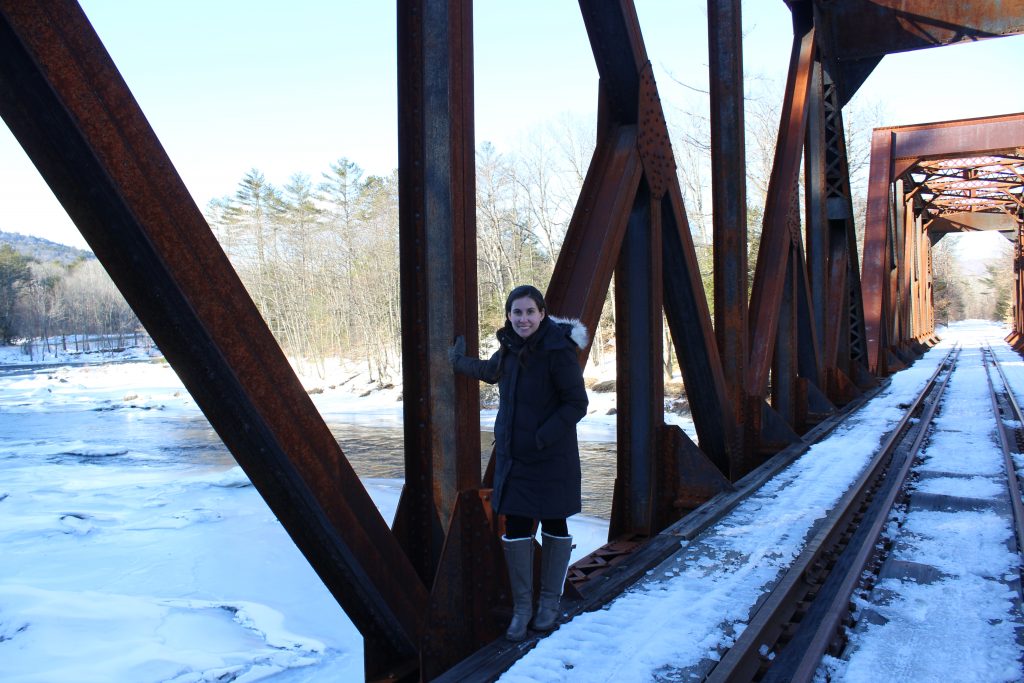New Hampshire has 54 covered bridges, on a trip I was able to see a few. As to why covered bridges were built, some people say that the roofs protected the beams from rotting, or from freezing in bad weather. Others say that, since these bridges look like barns, animals would cross without fear. No matter the reason they are masterpieces of 19th-century engineering.
During this trip I also enjoy some railroad bridges that were very interesting.
Blair Bridge
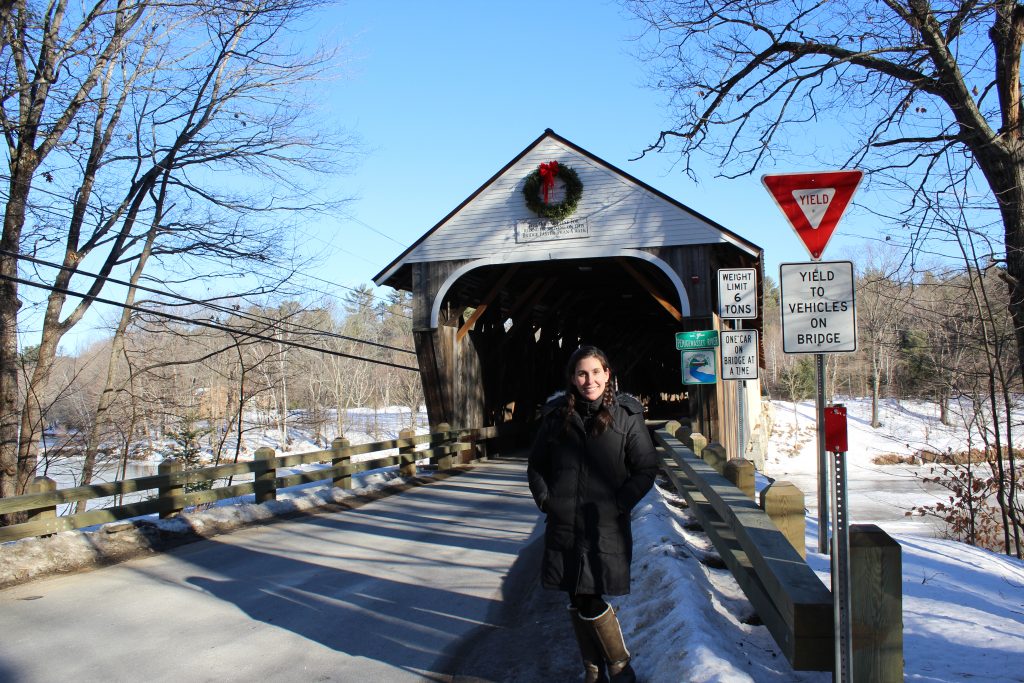
The first bridge at this location was built in 1829 at a cost of $1,000. That bridge was burned down by a man named Lem Parker who claimed that God told him to do it. Parker was taken to court and confessed to the charges. However, he was found not guilty because there were no witnesses. The construction of the current bridge was brought about when a doctor trying to ford the river on horseback found the current too strong. The horse drowned, but the doctor was saved. The town voted to build a bridge immediately. A sign was posted on the bridge indicating there was a fine of five dollars for riding or driving on the bridge faster than five miles per hour. It was rebuilt by Milton Graton and his son Arnold in 1977 at a cost of $59,379. The town of Campton and the state shared the cost of the repair. The Blair Bridge is eligible for listing on the National Register of Historic Places.

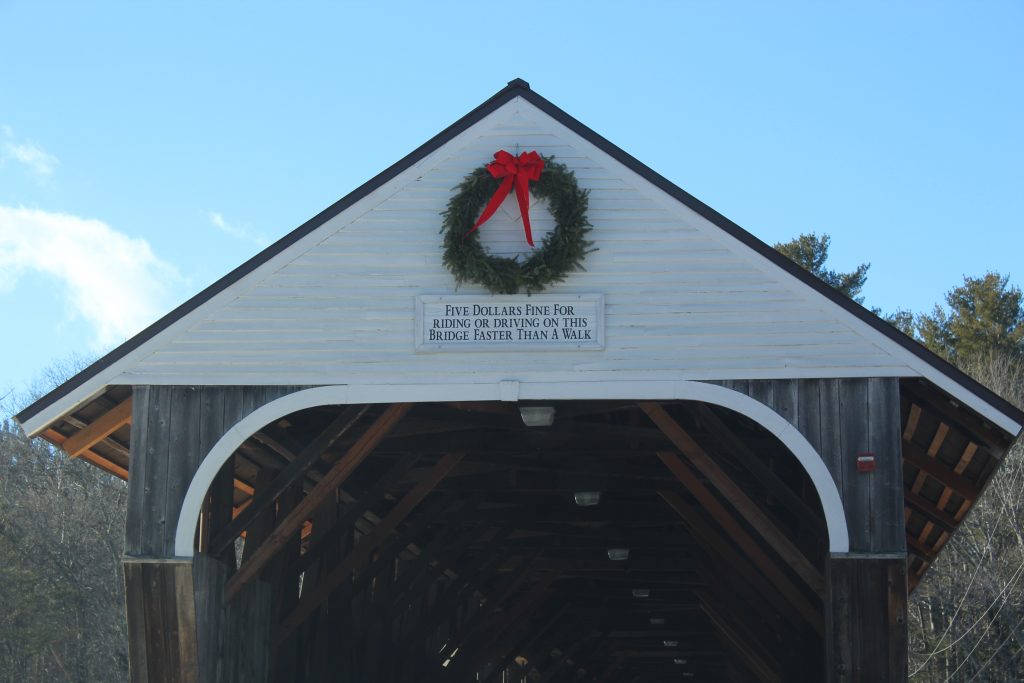
Smith Bridge

According to W. Edward White in his book Covered Bridges of New Hampshire, a Captain Charles Richardson built the first covered bridge at this site in the early 1800s. The current bridge was built in 1850 when James McQueston hired Herman Marcy of Littleton, N.H. to frame, raise, and finish a covered bridge across the Baker River for the Town of Plymouth. The bridge was known as Smith Bridge and was the same plan and style as the one located on Pont Fayette. Pont Fayette or Fayette Bridge was a structure which spanned the Pemigewasset River between Plymouth and Holderness from 1804 until 1934. The Smith Bridge was repaired in 1940, 1949, and 1958. It was rehabilitated in 1971 at a cost of $7,876. A telltale (height barrier) was erected to protect the bridge. Signs on the bridge include, “One Lane Bridge,” “One Car at a Time on Bridge” and “Speed Limit 15 MPH.” The Smith Bridge was eligible for listing on the National Register of Historic Places. The Smith Bridge was destroyed by fire on April 16, 1993 and was rebuilt as a covered bridge.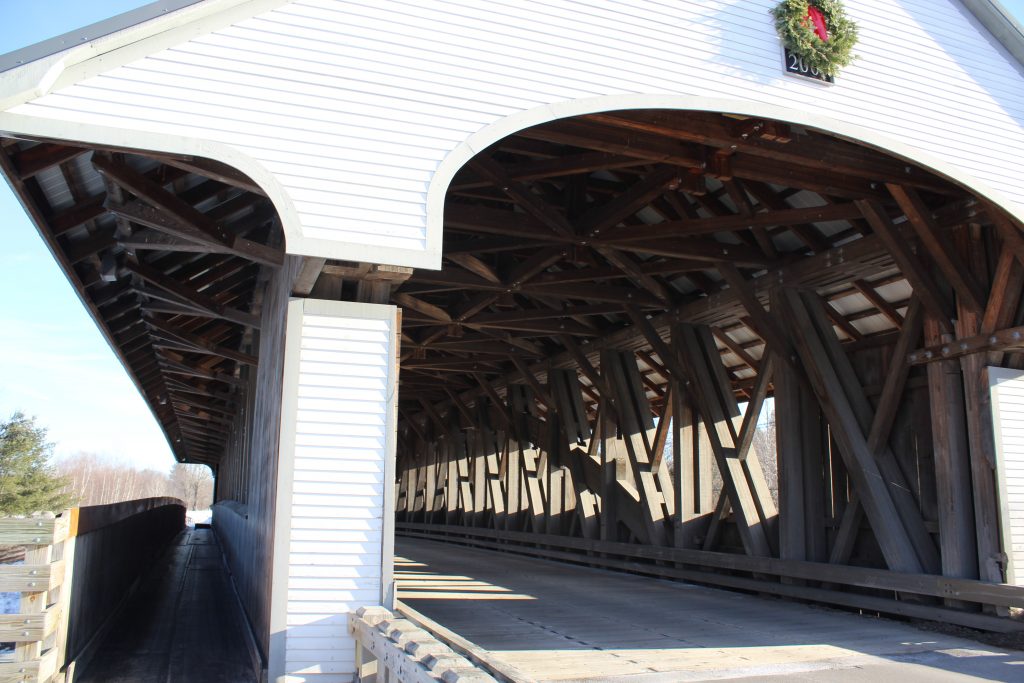
Sulphite Bridge
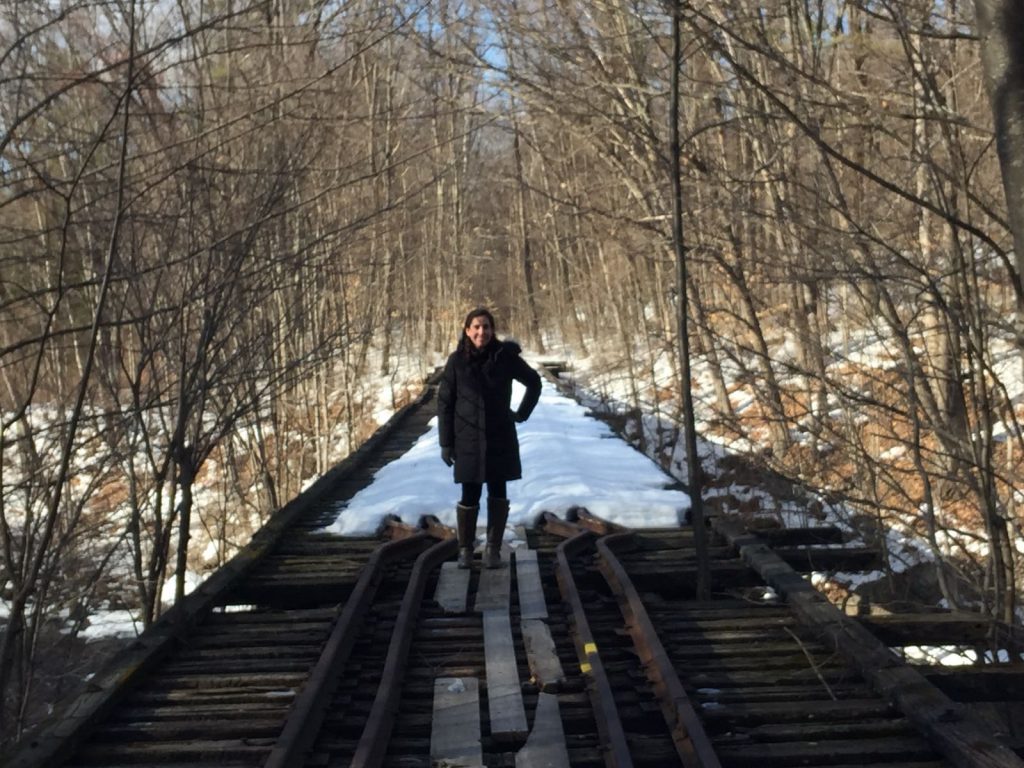
The bridge is 234 feet (71 m) long, and consists of three spans, each supported by Pratt trusses resting on granite piers or abutments. The main central span measures 180 feet (55 m). The bridge is believed to be the only surviving “upside down” covered railroad bridge, in which the rail bed is laid on top of the bridge roof, whose purpose is to shelter the trusses below. The railroad line was shut down in 1973.
The Sulphite Railroad Bridge, also known locally as the Upside-Down Covered Bridge is a historic railroad bridge in Franklin.
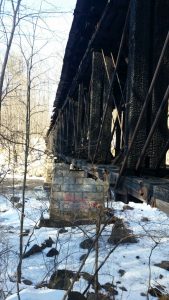
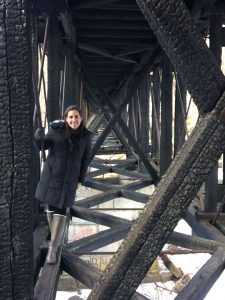
Cook’s Bridge
